Categories > Guides and Tips

Getting to Know the Hill Tribes of Northern Thailand
Hey there adventurers and culture enthusiasts! If you’re looking to embark on a journey that’s both enriching and awe-inspiring, then Northern Thailand is calling your name.
Beyond the bustling cities and popular tourist spots lies a world of vibrant hill tribe communities, each with its own unique traditions and captivating way of life.
Step off the beaten path and dive into an unforgettable experience of getting to know the hill tribes of Northern Thailand up close and personal. Read on!
What are the hilltribes of Northern Thailand?
Karen
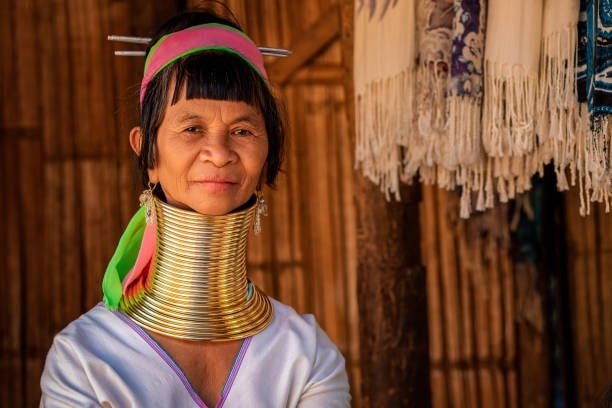
The Karen tribe, often referred to as the “Long Neck” tribe, holds a special place in the hearts of many travellers to Northern Thailand.
Their distinctive custom of wearing brass rings around the necks of women has captured the world’s imagination and become a symbol of their identity.
This unique tradition is an essential aspect of their cultural heritage and is thought to enhance a woman’s beauty and protect against evil spirits.
Beyond their well-known neck rings, the Karen people have a deep-rooted connection with the land they inhabit. Agriculture is a fundamental part of their lifestyle, and they practise traditional farming methods passed down through generations.
Walking through their terraced fields, you’ll witness their profound understanding of the environment and the sustainable farming techniques they employ.
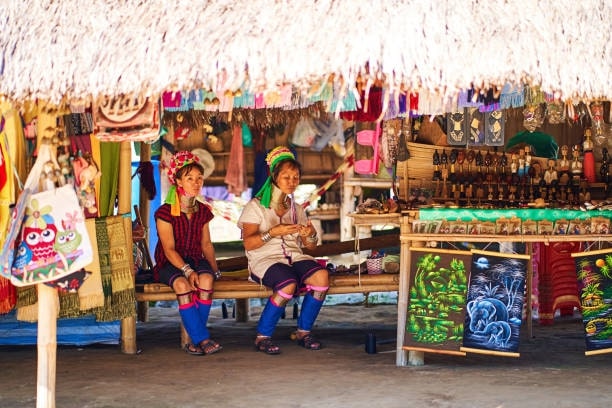
During your visit to a Karen village, you’ll have the chance to witness their exquisite craftsmanship.
Their artistry reflects a profound respect for nature and a keen eye for beauty. They have everything from handwoven textiles with intricate patterns to intricately crafted bamboo items,
The Karen tribe’s welcoming nature and warm hospitality will make you feel like an honoured guest in their community.
Engaging with the locals, sharing meals, and taking part in their daily activities will provide you with an intimate glimpse into their family-oriented way of life.
It’s a journey that will leave you with a deep appreciation for the resilience and cultural richness of the Karen people.
Hmong
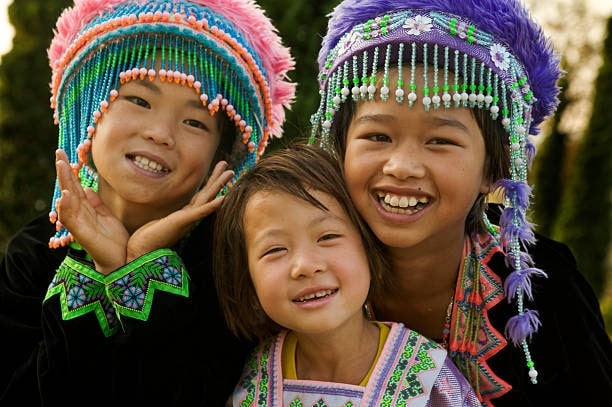
Colourful, spirited, and culturally dynamic, the Hmong tribe is a delight to encounter during your Northern Thailand adventure.
With their roots tracing back to China and other Southeast Asian regions, the Hmong people have a unique heritage that they proudly preserve.
One of the most enchanting aspects of the Hmong culture is their traditional attire. The vibrant clothing adorned with intricate embroidery is a visual feast that reflects the Hmong’s creativity and artistic expression.
The designs often tell stories of their history, daily life, and spiritual beliefs.The Hmong are also known for their love of festivals and celebrations.
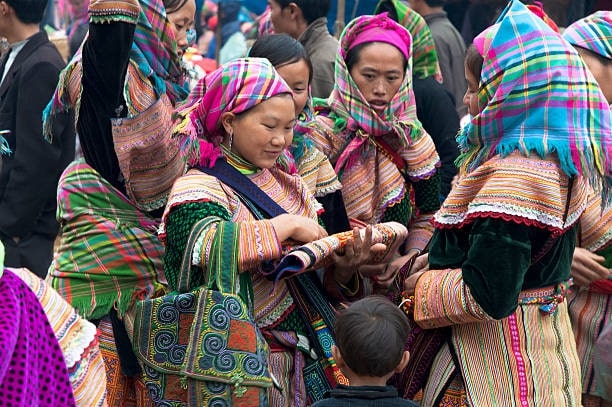
Joining them during their colourful festivities is an unforgettable experience. From the energetic Hmong New Year celebrations to the vibrant Flower Hmong Festival, you’ll find yourself immersed in a whirlwind of music, dance, and joyful camaraderie.
The Hmong people’s strong sense of community and support for one another is evident in their close-knit villages. You’ll witness the beauty of communal living and a shared responsibility for each other’s well-being.
Participating in their day-to-day activities, such as farming, handicraft making, or cooking, will forge meaningful connections and lasting memories.
As you interact with the Hmong tribe, you’ll gain insights into their belief in animism and ancestral worship, which plays a central role in their spiritual life.
The Hmong’s unwavering respect for nature and the spirits that reside in it is both humbling and enlightening.
Lahu
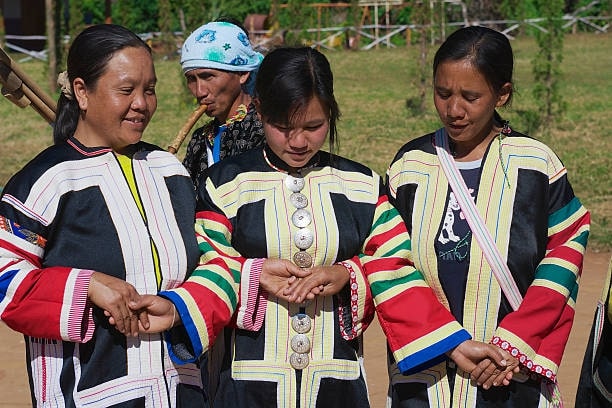
The Lahu tribe, nestled amidst the verdant hills of Northern Thailand, offers a glimpse into a world of spirituality, art, and harmony with nature.
They are known for their strong spiritual beliefs, and the village shaman, or “priest,” holds a significant position in their community.
The Lahu people have a rich cultural heritage that spans generations, and their way of life is deeply connected to the pristine mountains they call home.
Their traditional bamboo houses blend harmoniously with the natural surroundings, reflecting their sustainable living practices.
This hill tribe is also renowned for their exceptional hunting skills and their reliance on vegetable cultivation to sustain their livelihood. Some members of the tribe also engage in opium cultivation to supplement their modest income.
While their primary focus is on subsistence farming, cultivating rice and corn for their own consumption, the Lahu hill tribe takes great pride in their heritage as hunter-warriors.
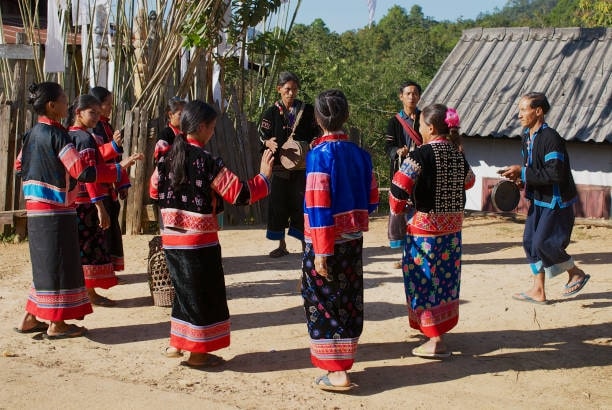
They are known for being serious and disciplined individuals who adhere to strict principles of right and wrong, with every member of the village following the collective will of the elders.
While they may not prioritise extended family ties as much as other hill tribe communities, the Lahu people remain strongly committed to unity and cooperation for the sake of survival.
One notable aspect of Lahu society is their dedication to gender equality, making them a potential contender for having one of the most gender-equitable societies in the world.
The Lahu tribe’s music and dance are an essential part of their cultural expression. Their melodic tunes and intricate dance steps are a way to celebrate their heritage, express emotions, and pass down stories from one generation to another.
Spending time with the Lahu tribe will allow you to witness their skilled craftsmanship, particularly in crafting bamboo products and intricate basketry.
The intricate designs and sturdy construction of their handmade items speak volumes about their creativity and ingenuity.
Akha
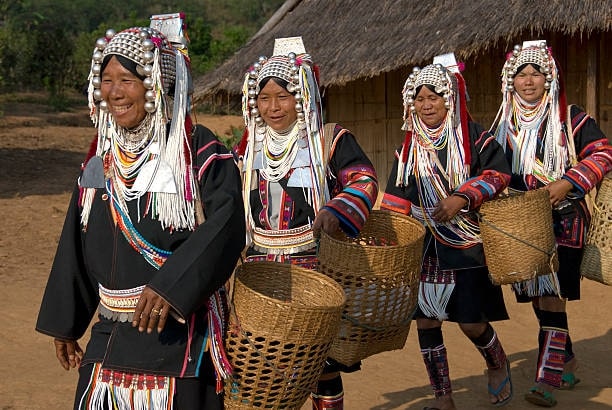
Venturing into the hills of Northern Thailand, you’ll encounter the vibrant and resilient Akha tribe.
Known for their distinct customs and striking headdresses, the Akha people have a unique cultural identity that reflects their spiritual beliefs and reverence for nature.
The Akha tribe’s attire is a marvel to behold, adorned with intricate beadwork and silver jewellery. Their headdresses, in particular, vary based on the wearer’s personal preference on ornaments, social status, and in what stage a woman is in her life.
Each headdress is a work of art, crafted with great care and passed down through generations.
Akha villages are often perched on hilltops, offering breathtaking panoramic views of the surrounding landscapes. Their traditional homes, constructed from bamboo and thatched roofs, harmoniously blend with the natural environment.
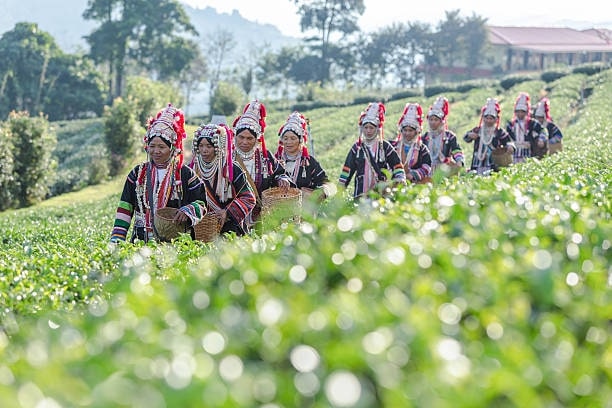
Slash-and-burn farming is a way of life for the Akha people. Hill rice, beans, tea, corn, coffee, and a variety of vegetables can all be grown successfully by them.
Mae Salong, also known as Santikhiri, in Chiang Rai province, is a region predominantly inhabited by a significant number of Akha hill tribe people.
Participating in a homestay with the Akha people provides an authentic experience of their daily lives and rituals.
The Akha have a rich history of oral storytelling, and their folklore is a treasure trove of myths, legends, and wisdom. You’ll have the opportunity to hear captivating tales that have been passed down through centuries by engaging with the elders .
As you immerse yourself in the Akha culture, you’ll witness their reverence for nature and the spirits that inhabit the mountains and forests.
Their animistic beliefs are deeply intertwined with their agricultural practices and daily routines, highlighting the profound connection between the Akha people and the land they call home.
Mien
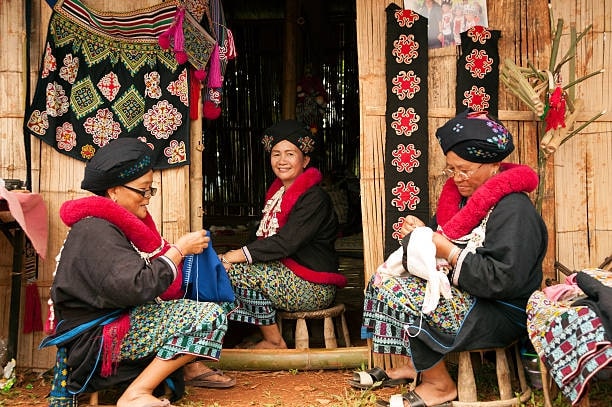
The Mien tribe, also known as the Yao tribe, is a group of people with a strong sense of identity and a rich cultural heritage.
They can be found in various provinces of Thailand, including Chiang Rai, Phayao, Nan, Lampang, Chiang Mai, Phitsanulok, and Kamphaeng Phet.
However, it is highly probable that you will encounter them mainly in Chiang Rai province.
As you explore the tribe, you’ll be enchanted by their vibrant clothing, intricate silver jewellery, and the warm smiles that greet you.
One of the most striking aspects of the Mien culture is the women’s traditional outfit. Women wear black long pants with intricate patterns.
On the other hand, men wear long pants with multiple stripes, a cloak to the ankles, and wrap their heads in two steps, often keeping the head covered even while sleeping.
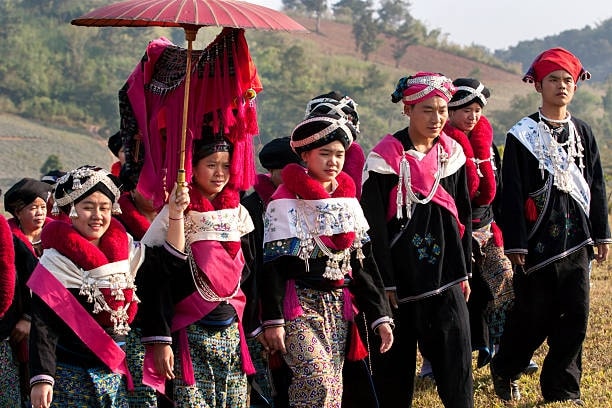
During ceremonies, special clothes are sewn by Mien women for the masters and participants.
The Mien people are also renowned for their silver ornament-making skills, and during ceremonies, women adorn themselves with elaborate silver jewellery.
Mien people have a fondness for stripes, seen in their choice of bags, wallets, and twine cords to fasten shirts, which is a tradition influenced by China.
Additionally, Mien women like to wrap their heads like capes and decorate their shirts with red ball tassels made from knitting wool. These traditions hold significant cultural and aesthetic value for the Mien tribe.
Music is also an integral part of Mien life, and you’ll often find them playing traditional instruments like the bamboo mouth organ or the khaen.
During festivals and gatherings, the melodic tunes and rhythmic beats of Mien music create an atmosphere of celebration and joy.
The Mien people hold their spiritual beliefs close to their hearts, and their reverence for ancestors and spirits is deeply ingrained in their daily lives.
Witnessing their spiritual ceremonies and rituals is a profoundly moving experience that reveals the spiritual depth of their culture.
As you interact with the Mien tribe, you’ll learn about their age-old agricultural practices and the sustainable farming methods they employ.
They have a profound knowledge of the land and its resources, allowing them to live in harmony with nature.
Lisu
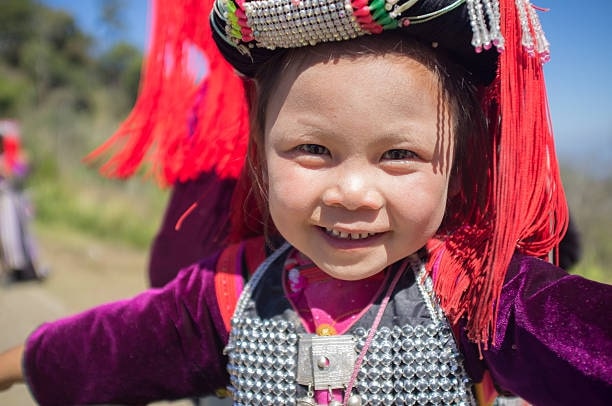
As you journey through the mountains of Northern Thailand, you’ll find the Lisu people living in close-knit villages, where a strong sense of community prevails.
The Lisu are known for their colourful clothing, often adorned with intricate patterns and embroidery. Their traditional outfits are a visual representation of their creativity and cultural pride.
Observing the intricate craftsmanship that goes into creating their clothing is a testament to their artistry. One of the highlights of visiting a Lisu village is witnessing their lively and energetic dances.
Their traditional dances are filled with joy and are often performed during festivals and celebrations. Joining in on the dancing is an excellent way to experience the spirit of togetherness and celebration that defines the Lisu culture.
The Lisu people’s spiritual beliefs are deeply rooted in animism and shamanism. Their shamans play a crucial role in healing and guiding the community through rituals and ceremonies.
Participating in their spiritual practices allows you to understand the profound connection they have with the spiritual world.
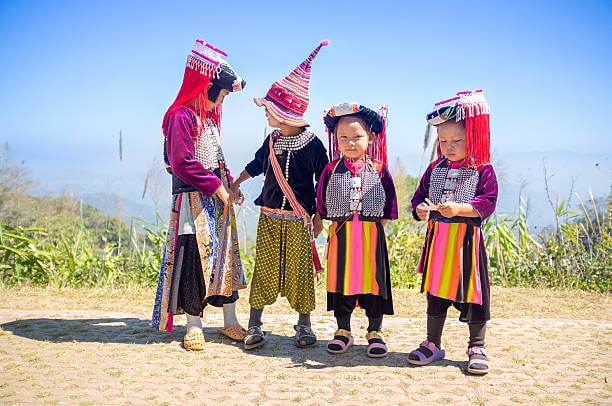
The Lisu hill tribe’s religious beliefs also blend ancestor worship and spirit propitiation. According to their faith, spirits are associated with all living beings and certain inanimate objects.
Vital spirits encompass ancestors, water, mountains, and villages. Unlike being overly concerned with the afterlife, the Lisu focus on the present spirit world, dealing with it in their daily lives.
They believe that spirits, like humans, have emotions and imperfections, allowing for daily interactions and communication with them.
Moreover, the Lisu’s strong bond with nature is evident in their agricultural practices and close relationship with the land. They are skilled farmers, cultivating crops and tending to livestock with great care and reverence.
Immersing yourself in the Lisu culture will leave you with a sense of appreciation for their warm-heartedness, artistic talents, and the deep-rooted connection they share with their ancestral land.
Lawa
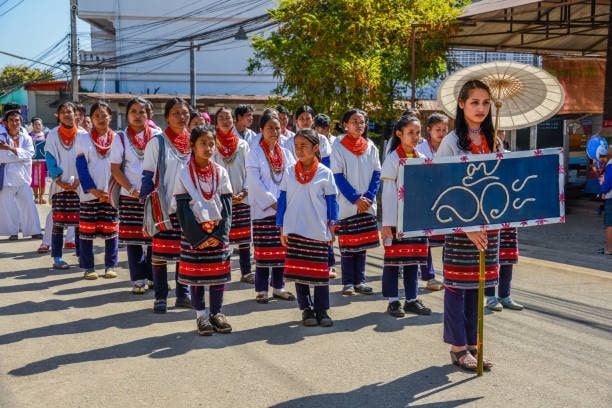
The Lawa people, also known as Lua in Thai (ลัวะ or ละว้า), are regarded as the indigenous inhabitants of Thailand.
Deep within the enchanting landscapes of Northern Thailand, you’ll encounter the Lawa tribe, a group of people with a rich cultural heritage and a history that spans centuries.
The Lawa people have inhabited these lush mountains for generations, and their way of life is deeply intertwined with the natural world around them.
It is believed that the Lawa, or Lua, constituted a significant part of the pre-Thai population in Northern Thailand. References in the Chiang Mai Chronicle also mention the Lawa people, solidifying their historical presence in the region.
Distinguishing them from other groups such as the Akha, Lahu, Hmong, Lisu, Yao, and Palong, the Lawa people have a longer history in Northern Thailand.
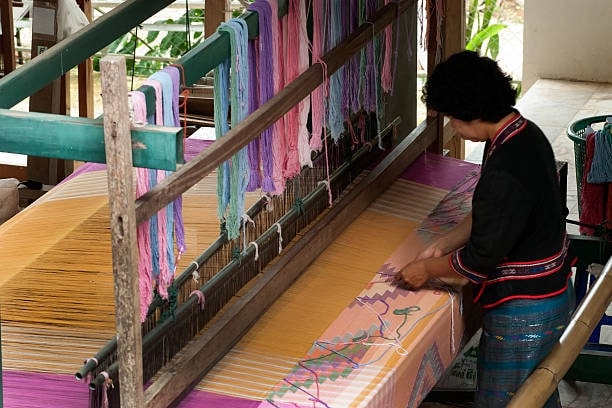
Unlike the aforementioned tribes who migrated to the region from the late 19th and early 20th centuries onwards, the Lawa have deeper roots in the area. Their lifestyle and villages share similarities with other hill tribes in the region.
Despite being one of the lesser-known hill tribes in Thailand, the Lawa are one of the ancient, aboriginal communities of Northern Thailand, pre-dating the migration of the Tai peoples in the 11th to 13th centuries.
Contrary to popular belief, they were not originally hill-dwellers.
Another lesser-known fact about the Lawa is their exceptional skills in silversmithing and weaving. They are accomplished artisans in working with silver, often mistakenly associated with the Karen tribe.
However, it is believed that the Lawa were the original tribal silversmiths in the area. Additionally, along with the Karen people, the Lawa are the only tribal groups in Thailand known for weaving cloth patterned with warp ikat.
Their expertise in these crafts adds to the richness of their cultural heritage.
Ethical Concerns and Responsible Engagement
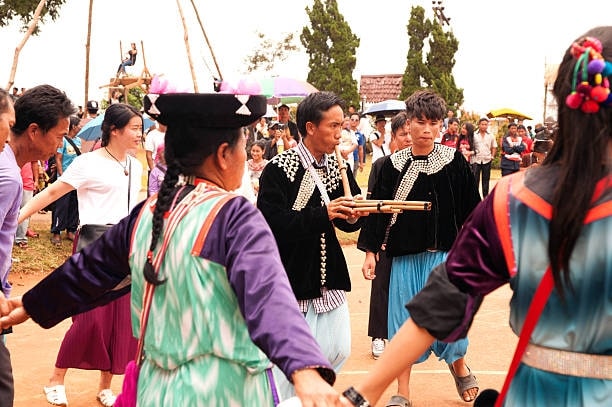
As you set forth on your adventure to explore the hill tribe communities of Northern Thailand, it’s essential to approach this journey with a deep commitment to ethical concerns and responsible engagement.
Each hill tribe has its own unique culture, customs, and way of life, and it’s paramount that you respect and embrace this diversity with an open heart and mind.
Be mindful of your actions and interactions, ensuring that you don’t impose your values or judgments on these communities but rather approach them with humility and curiosity, seeking to learn and appreciate their traditions.
As a responsible traveller, be aware of the potential for exploitation that can sometimes arise in the context of tourism.
You can also support fair trade initiatives that empower the local communities economically while preserving the authenticity and integrity of their cultural heritage.
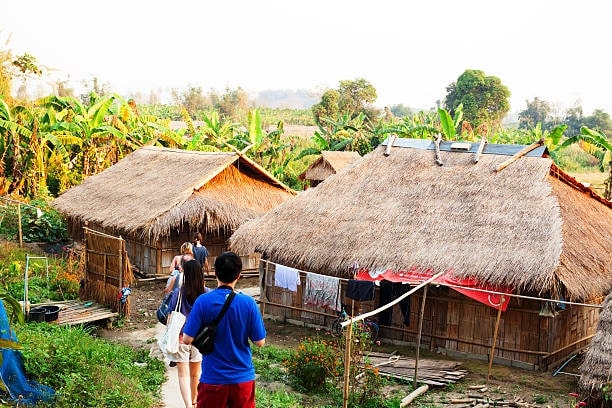
By being conscious of your choices as a consumer and visitor, you can contribute positively to the well-being of the hill tribe people and the sustainability of their way of life.
Preserving the rich traditions and beliefs of the hill tribes is of utmost importance. Engage in cultural exchanges with respect and eagerness to learn, allowing yourself to gain insights into their worldviews and foster mutual understanding.
By valuing and cherishing their customs, you contribute to the preservation of their unique identity for future generations.
Amidst the stunning landscapes of Northern Thailand, be mindful of your environmental impact.
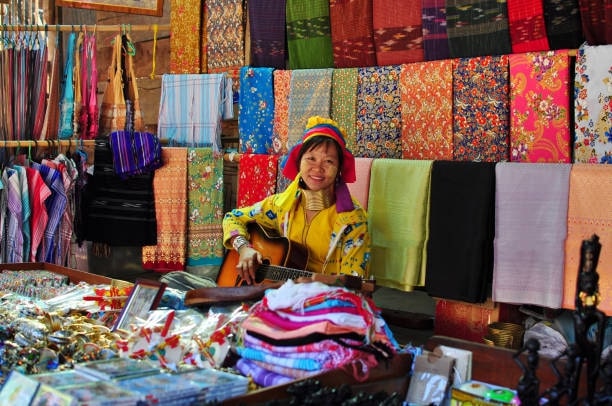
Practise eco-friendly habits, minimise waste, and leave nature undisturbed to demonstrate your respect for the pristine surroundings that the hill tribe communities call home.
Furthermore, strive to empower the local communities through your choices as a traveller.
Support responsible tourism initiatives, purchase unique souvenirs directly from the artisans, and engage in community-driven development projects to foster a positive and sustainable relationship with the hill tribes.
As you capture the beauty of these cultures through photography, do so with respect and consideration.
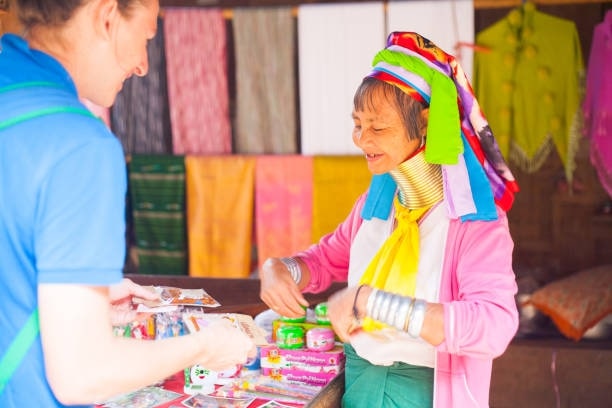
Seek permission before taking photographs of people or sacred sites, and be mindful of cultural sensitivities surrounding photography to celebrate their traditions without intruding on their privacy.
In cases where you encounter any unethical practices, be vigilant and report such incidents appropriately. By doing so, you can help protect the hill tribe communities and contribute to the promotion of ethical tourism in the region.
At the end of your journey, take a moment to reflect on the impact of your visit on the hill tribe communities and the environment. Be grateful for the privilege of experiencing their culture and acknowledge the responsibility you hold as a traveller.
In your pursuit of getting to know the hill tribes of Northern Thailand, be a mindful traveller, forging genuine connections, and leaving a positive footprint on your path.
You can reach out to agencies or companies like Chiang Mai & North Thailand Tours | Thailand Hilltribe Holidays and Responsible Travel to escort and help you have an ethical tour or visits to these hill tribes.





